What Is the Role of Material Handling in Supply Chain Management?
Effective material handling not only boosts operational efficiency but also reduces costs, minimizes accidents, and ensures the smooth flow of materials.
Material handling plays a crucial role in the success of any industrial operation, whether in manufacturing, warehousing, logistics, or construction. It encompasses the movement, protection, storage, and control of materials throughout the production process. In this article, we will explore the fundamentals of material handling, key equipment used in handling material, and the evolving trends in the material handling industry.
What Is Material Handling?
Material handling refers to the process of transporting raw materials, components, semi-finished goods, and finished products through various stages of production, storage, and distribution. It involves the use of specialized equipment, systems, and methods to move materials efficiently and safely within a facility.
Incorporating advanced material-handling equipment such as lifting clamps, vacuum lifters, slab lifters, and scissor lifters can improve operational speed, precision, and safety. The ultimate goal is to optimize workflow, reduce downtime, and increase the overall productivity of the operation.
The Role of Material Handling in Industrial Operations
Importance of Material Handling
Effective material handling is essential for several reasons:
-
Efficiency: Streamlined material movement reduces waiting times, improves throughput, and enhances overall operational efficiency.
-
Safety: Proper material handling equipment reduces the risk of injury by minimizing manual labor and the handling of hazardous materials.
-
Cost Reduction: Optimized material flow leads to fewer mistakes, less material wastage, and decreased labor costs.
-
Inventory Control: Accurate material handling allows for better tracking of inventory, ensuring stock is available when needed without overstocking.
Industries That Benefit from Material Handling
The use of material handling systems is crucial across various industries, including:
-
Manufacturing: From raw material storage to assembly lines and final product handling, material handling systems streamline production processes.
-
Construction: Efficient handling of heavy materials like cement, steel, and glass is essential for maintaining a steady construction flow.
-
Logistics and Warehousing: Proper material handling ensures that goods are stored, tracked, and distributed efficiently.
-
Food and Beverage: In food processing plants, careful handling of raw ingredients and finished goods is vital to meet safety and quality standards.
For more about the role of material handling in various industries, check out this article on what is material handling.
Key Material Handling Equipment
Material handling operations rely on various types of lifting and transportation equipment to facilitate the efficient movement of materials. Here are some of the most commonly used material-handling equipment:
1. Lifting Clamps
Lifting clamps are versatile tools designed to grip materials firmly during lifting. They are especially useful in industries where heavy and bulky materials need to be handled safely. Lifting clamps come in different designs based on the material type and load capacity. For example, steel and concrete slabs can be easily lifted using specific lifting clamps designed to handle their weight and structure.
2. Vacuum Lifters
Vacuum lifters utilize suction to lift smooth, flat materials without causing damage. This type of equipment is commonly used for handling glass, metal sheets, and other delicate materials that require a non-contact lifting method. The ability to lift materials without direct contact reduces the risk of damage, making vacuum lifters indispensable for industries dealing with fragile components.
Check out this vacuum lifter for a closer look at the technology behind lifting delicate loads.
3. Slab Lifters
Slab lifters are specialized tools for lifting large, flat items such as stone or concrete slabs. These devices are designed to handle heavy, unwieldy objects while ensuring stability during transport. The slab lifter works by gripping the material at several points to evenly distribute the weight and prevent tipping.
For example, the Aardwolf Slab Lifter is designed to lift concrete, granite, and stone slabs with ease, reducing manual labor and increasing productivity in construction and stone industries.
4. Scissor Lifters
Scissor lifters are used to raise or lower materials to specific heights. The lifting mechanism operates through a scissor-like mechanism, providing vertical movement with stability. This equipment is often used in situations where precise height adjustments are required. Scissor lifters are ideal for tasks such as lifting materials onto higher shelves or machinery during assembly.
Take a look at this scissor lifter to see how it can be used for lifting materials safely and efficiently.
Integrating Material Handling Equipment for Optimal Efficiency
Benefits of Integrating Various Material Handling Systems
Integrating multiple types of lifting equipment creates a more flexible and efficient material handling system. When different systems, such as vacuum lifters, lifting clamps, and slab lifters, are used together, companies can handle a wider variety of materials, from delicate glass to large, heavy concrete slabs.
For example, when using a gantry crane for heavy lifting, a vacuum lifter can be used to lift and place delicate items. Combining these systems ensures that the right equipment is used for the job, leading to more efficient workflows and increased safety.
Learn more about the functionality of a gantry crane and how it complements other material handling solutions.
The Role of Automation in Material Handling
Automation in material handling is a growing trend in many industries. Automated systems reduce the reliance on manual labor, improving both safety and efficiency. Automated guided vehicles (AGVs) and robotic arms can be integrated with lifting systems like vacuum lifters and slab lifters to automate the entire handling process, from material transport to positioning.
Implementing automated material handling systems can help reduce human error, improve cycle times, and increase productivity.
Best Practices in Material Handling
To ensure that material handling operations run smoothly, it's essential to follow best practices that prioritize safety, efficiency, and sustainability:
1. Regular Equipment Maintenance
Routine maintenance is crucial to ensure that all material handling equipment operates efficiently and safely. Regularly inspect your material-handling equipment to check for wear and tear, and make any necessary repairs promptly. This proactive approach reduces downtime and prevents accidents caused by malfunctioning equipment.
2. Proper Training for Operators
Operators should be well-trained in the safe and efficient use of material handling equipment. Training should include learning how to operate lifting clamps, vacuum lifters, and scissor lifters, as well as understanding how to integrate different systems for optimal performance. Well-trained operators reduce the risk of accidents and improve overall workflow efficiency.
3. Use of Safety Accessories
Using safety accessories such as ratchet tie down straps is essential for securing loads during transport. These straps help prevent materials from shifting or falling, reducing the risk of injury or damage. Properly securing loads should always be a priority when using lifting equipment.
Learn more about how to properly use ratchet tie down straps to enhance safety in material handling operations.
4. Implementing Lean Material Handling Principles
Lean principles focus on reducing waste and improving efficiency in operations. In material handling, this can involve optimizing equipment layout, minimizing handling steps, and reducing unnecessary movement. Adopting a lean approach to material handling helps businesses cut costs and increase productivity while maintaining high safety standards.
Choosing the Right Equipment for Your Material Handling Needs
Factors to Consider
When selecting material handling equipment, there are several factors to consider:
-
Load Size and Weight: The equipment should be able to handle the weight and size of the materials being moved.
-
Space Constraints: Consider the available space within your facility. Some equipment, like vacuum lifters and slab lifters, may require more room for operation.
-
Type of Material: Different materials require different handling methods. Delicate items like glass may require vacuum lifters, while larger materials like concrete may need slab lifters or lifting clamps.
-
Automation Needs: If automation is part of your strategy, choose equipment that can integrate seamlessly with automated systems, such as robotic arms or AGVs.
By carefully considering these factors, you can ensure that you select the right equipment for your material handling needs.
Future Trends in Material Handling
Automation and Smart Technology
The material handling industry is moving toward more automated and data-driven solutions. Incorporating smart technology such as sensors, RFID tracking, and real-time data analytics can significantly improve the efficiency and safety of material handling operations. Automated systems, including automated cranes, robotic arms, and smart lifting equipment, are expected to become more widespread in the coming years.
Sustainability and Green Solutions
Sustainability is becoming a critical factor in the material handling industry. Companies are increasingly looking for eco-friendly equipment that reduces energy consumption, minimizes waste, and has a smaller environmental footprint. Innovations in material-handling equipment that promote energy efficiency and sustainability will play a vital role in the future of the industry.
Conclusion
Effective material handling is vital to the success of any industrial operation. By investing in the right lifting equipment, such as vacuum lifters, slab lifters, lifting clamps, and scissor lifters, companies can optimize their workflows, improve safety, and reduce costs. As the material handling industry continues to evolve, automation and smart technology will play a significant role in transforming how materials are moved, stored, and controlled.
By integrating different material handling systems, following best practices, and keeping up with technological advancements, businesses can create a highly efficient, safe, and cost-effective material handling operation. Whether you are looking for a vacuum lifter for delicate loads, a slab lifter for construction materials, or a gantry crane for heavy lifting, understanding the options available and choosing the right equipment is key to success.
For more information on material handling and the latest equipment, explore the full range of products and solutions available at Aardwolf, including innovative lifting solutions like the gantry crane, vacuum lifter, and more.




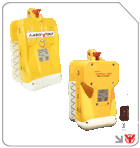
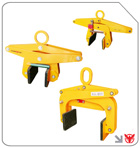
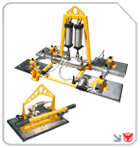
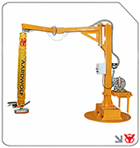
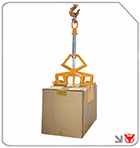
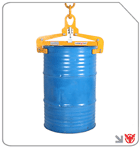
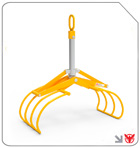
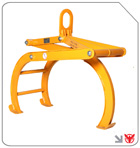
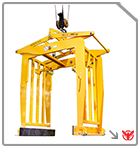
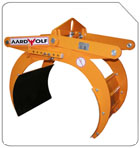
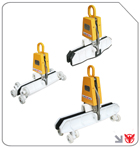
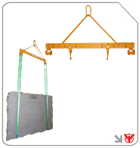
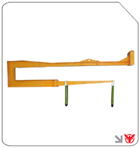
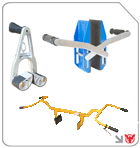
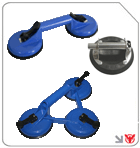

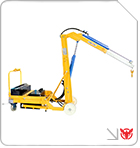
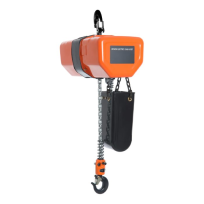
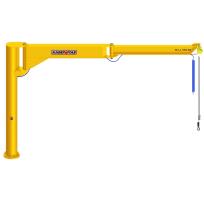
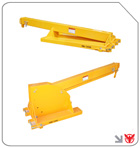
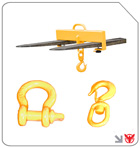
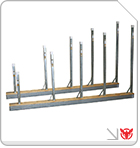
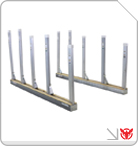
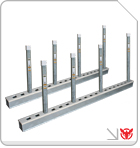
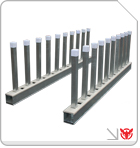
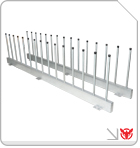
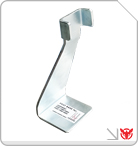
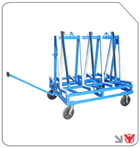
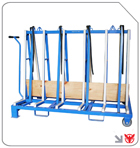
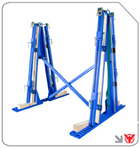
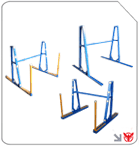
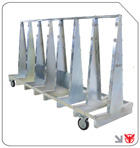

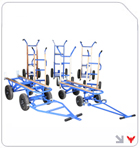
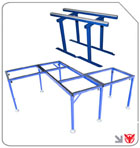
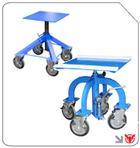
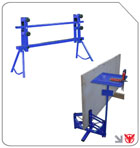
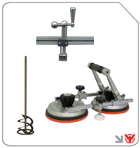

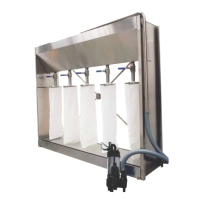
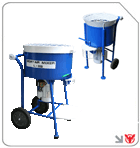
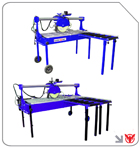
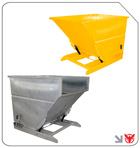
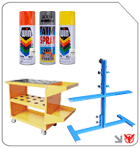

Follow us on: